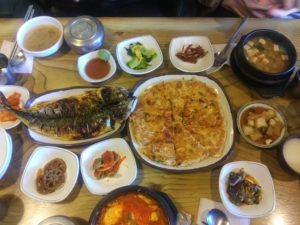
Korean cuisine is found all over the world. If you are traveling within South Korea however, try some foods you may be familiar with to see how they are traditionally made. It is not unusual to find that foreign dishes are altered to a local country’s tastes when they make their way overseas, so you may find seemingly familiar dishes taste a bit different in its country of origin. Even so, you will still find many local and regional dishes that are unfamiliar. Below are my 12 recommendations for unique foods and drinks to try while traveling in South Korea. This list is by no means exhaustive. Korea has many unique and delicious dishes. Below are my favorites.
Bibimbap
Bibimbap is a Korean dish served in a hot bowl consisting of steamed rice topped with sautéed vegetables, chili pepper paste, and soy sauce. The dish is commonly served with sliced seasoned beef and can be topped with an egg. Bibimbap is absolutely delicious and a favorite of mine. If you have not tried Korean bibimbap, I highly recommend it.
Bulgogi
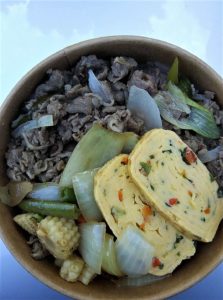
Bulgogi
Bulgogi is a Korean dish consisting of thinly sliced beef – sometimes pork – that is marinated and grilled. The marinated beef is flavorful, but mild. This dish may be served with steamed rice.
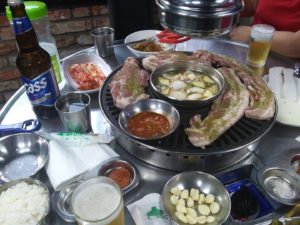
Korean barbecue, pork
Korean Barbecue
You may have heard of the famous Korean barbecue. Korean barbecue usually consists of pork, beef, or chicken that is brought to your table uncooked. The meat is then barbecued by you and your guests at the table, which usually has a gas or charcoal grill in the center. Korean barbecue is served with numerous sides, including one or more kimchis, lettuce leaves, chili paste, and vegetables. Though the food is delicious, I recommend trying Korean barbecue for the experience. But, remember to cook your meat thoroughly to avoid food-borne illness and food poisoning.
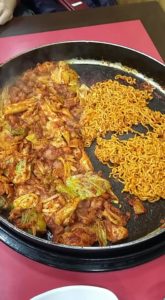
Dak-galbi (spicy stir-fried chicken)
Dak-galbi
Dak-galbi, otherwise known as spicy stir-fried chicken, is another one of those dishes to experience. The marinated chicken mix, which includes cabbage and Korean rice cakes, is cooked at your table typically in a large cast iron skillet. You also have the opportunity to order sides with your main meal, such as ramen noodles, kimchi, raw cabbage, and more. If you enjoy spicy foods, give this dish and experience a try.
Bindaetteok
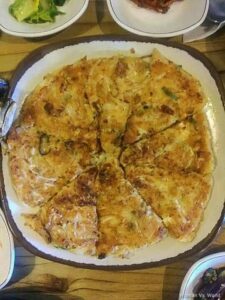
Bindaetteok (mung bean pancake)
Bindaetteok, also known as Mung bean pancake, is a delicious griddle cake that can be eaten as a main meal or as a side dish. The pancake typically consists of ground mung bean, pork, and vegetables, among other ingredients. I found the pancake to be tasty, but mild in flavor.
Soondubu jiggae, variation Sundubu jiggae
Soondubu jiggae, or spicy soft tofu stew, is a delicious stew for the winter time. The hot stew, which looks more like a soup, can include clams, shrimp, various vegetable, and other ingredients depending on the recipe. The stew is served in a hot clay pot. If you enjoy spicy foods, give this delicious dish a try.
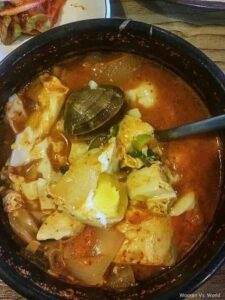
Soondubu jiggae (spicy soft tofu stew)
Doenjang jiggae
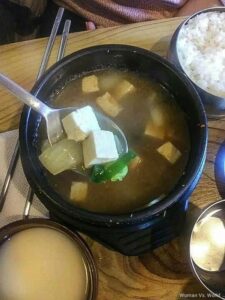
Doenjang jiggae (fermented soybean paste stew)
Doenjang jiggae, also known as fermented soybean paste stew, is just as delicious as Soondubu jiggae, but milder in flavor. This stew uses a fermented soybean paste and can include ingredients such as various vegetables, tofu, and seafood.
Japchae
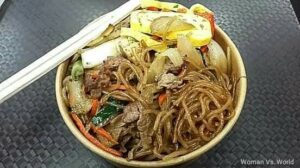
Japchae
Japchae is made of rice noodles and vegetables that are stir-fried. The noodles are seasoned with sugar, soy sauce, and sesame oil giving it a savory flavor. The noodles, called dangmyeon, are made of sweet potato starch. Japchae is commonly served with beef or pork.
Gilgeori Tostuh, or Korean Street Toast

Korean Street Toast
Gilgeori tostuh is a delicious street snack that makes a wonderful breakfast. This is a great take away sandwich if you are busy sightseeing while also exploring as many Korean food options as you can. This is a popular Korean street food that has been around for a couple of decades. The sandwich is commonly made with toast, egg, cabbage, carrots, green onion, and ketchup. Variations may add bulgogi (meat), mayonnaise, and cheese, among other ingredients. This hot sandwich is filling and flavorful.
Kimchi in all its forms
Korea’s famous kimchi consists of fermented vegetables. Kimchi is found in various forms in Korea, including but not limited to radish, cucumber, cabbage, and radish water kimchi. Cabbage is the most commonly found kimchi in Korea and abroad. However, each type will have its own unique kimchi flavor, so try them all.
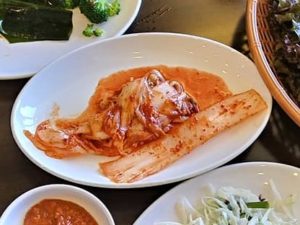
Cabbage kimchi
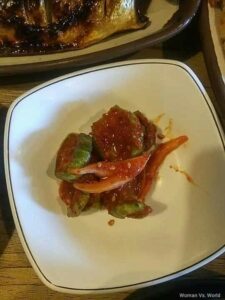
Cucumber Kimchi
Dongdong Ju
Dongdon ju is a Korean rice wine. This drink is not the same as makgeolli. Dongdong ju is a milkier, thicker rice wine and is sometimes referred to as premature makgeolli. Dongdong ju has a slight effervescence and a fairly mild, slightly sweet flavor. At first, the drink’s light bubbly nature and light sweet taste can seem a bit odd, but after a cup or two it will grow on you. As with all new alcoholic drinks, be careful – you never know how quickly this will affect you.
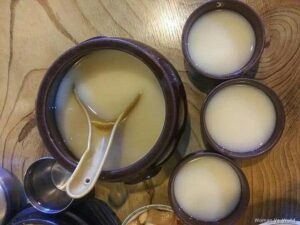
Dongdong ju
Soju
Soju is a Korean alcoholic drink typically made of rice. Soju on average will be 20% alcohol by volume (ABV), but can be stronger. This clear alcohol is served in a shot glass, but you can also find people drinking soju and beer where the soju is dropped or poured into the beer. If you like the harder, stronger liquors, then soju may be the drink for you.
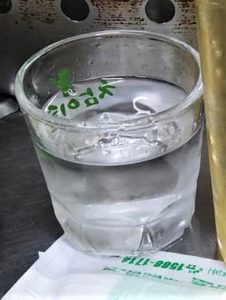
Soju (Korean rice-based alcohol)
Korean Craft Beer
Korea’s craft beer scene is still very nascent, but blooming as of this posting in 2021. The country’s craft brewers gea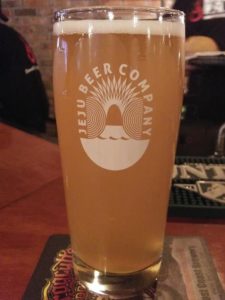 r their beers toward the Korean palate. For a beer lover, such as myself who spent time in Europe’s beer drinking culture, the various brews and styles leave a lot to be desired. Many Korean craft brews lack the taste and complexity of the beers found in Europe or in the United States beer scenes. Nonetheless, venturing out and seeing what Korean craft brews are all about can be an adventure. You might find a beer that hits the spot. As you wander around Korea, especially Seoul, you’ll find many places serving craft brews – so stop in and try a few.
r their beers toward the Korean palate. For a beer lover, such as myself who spent time in Europe’s beer drinking culture, the various brews and styles leave a lot to be desired. Many Korean craft brews lack the taste and complexity of the beers found in Europe or in the United States beer scenes. Nonetheless, venturing out and seeing what Korean craft brews are all about can be an adventure. You might find a beer that hits the spot. As you wander around Korea, especially Seoul, you’ll find many places serving craft brews – so stop in and try a few.

Korean Teas
Tea is an important part of Korean culture. The variety of Korean teas available is practically mind numbing – everything from rose, tangerine, plum, buckwheat, barley, to ginseng teas. Sample a cup of hot tea at one of the local Korean tea houses for another fun experience or go to the local emart or Lotte Mart to purchase boxed tea. Daechu-cha, or jujube tea, is a traditional tea in South Korea. Jujube is a berry that is native to the warmer regions of Asia, such as India and parts of China. The jujube is similar to the date in size and will taste like an apple if fresh or taste like a date if dried.
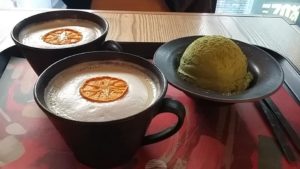
Tangerine tea latte with green tea ice-cream
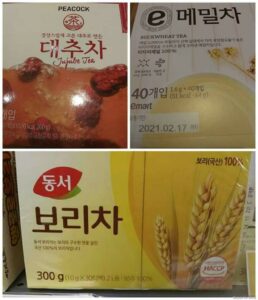
Jujube, Buckwheat, and Barley teas

Traditional Korean tea house, Ikseondong, Seoul
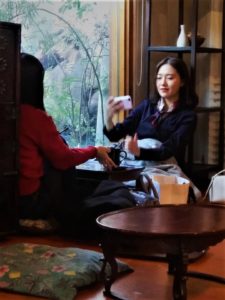
Traditional Korean tea house, Ikseondong, Seoul
